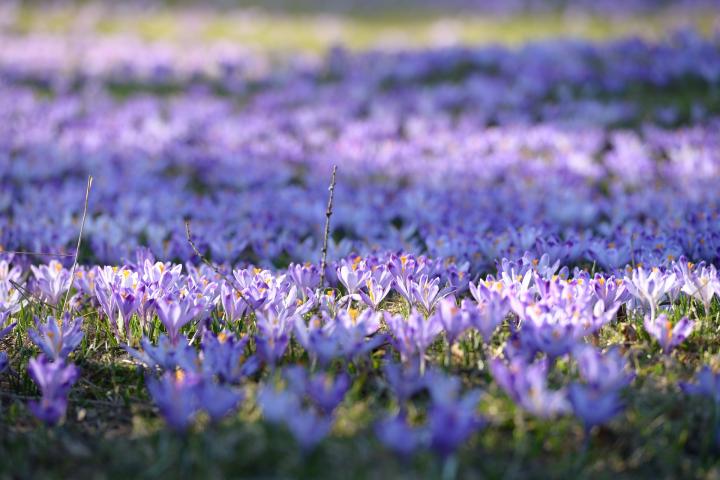
Sign up for our daily newsletter to get gardening tips and advice.
Planting, Growing, and Caring for Crocuses
ADVERTISEMENT
Can people who are allergic to pollin in flowers have a problem with crocuses?
Dear Alan,
While it’s possible that someone who is allergic to pollen may have an issue with crocuses, they do appear on lists of plants recommended for pollen-allergy sufferers.
The Missouri Botanical Garden offers a robust resource for the best trees, shrubs, and grasses for allergy sufferers.
—The Editors
Hi,
I want to plant crocus , daffodils bulbs in my lawn.
How do I prevent crocus from spreading to my neighbours lawn?
Thanks,
Su
Just bought bulbs and want to know can I plant them now and they will take 3/:23
You could certainly plant them, but unless they have been pre-chilled, they are unlikely to bloom this year. They should still produce leaves, though, which will set them up nicely for blooming next spring.
Last fall I planted Saffron Crocus for the first time. I planted them in a large pot, out doors. They grew fine, bloomed and I even got several stigmas from them. Once the flowers died, the plants produced a grass like growth. It's about 10 to 12 inches long. Do I need to trim this growth back or should I leave it alone? Like I said they are new to my garden, and I would like them to grow back. Thanks for any info anyone can give me.
Bernard, as with all bulbs you want to leave the leaves alone until they die back so the corms can gather energy from the sun and they will come back and possibly naturalize in your garden depending on where you are and your growing conditions. Once the leaves have died back then you can cut the old foliage down to the ground. A bulb fertilizer will help them grow better if you fertilize, I believe, after the blooms are done. Happy gardening!
Is there any difference in the care for saffron crocus?
I don't know where YOU live.....but here in St Helens, OR the DEER love crocus. As soon as the flower sticks it's head up the deer eat them......so I have beds of green plants......all my flowers are gone....again. My fault.....we had snow and I didn't re-spray my deer repellent soon enough......they got 'em!!!
do deer like to eat crocus leaves or flowers?
We have a deer problem where we live.











